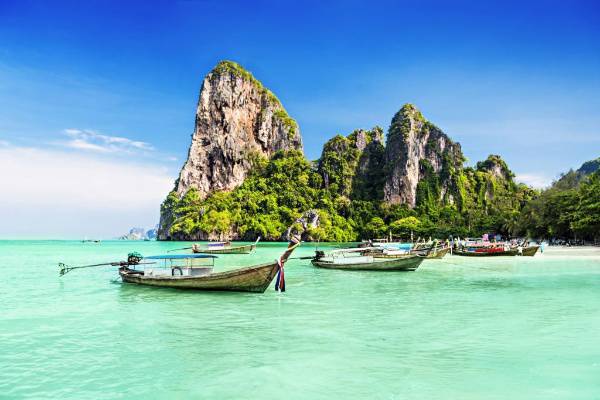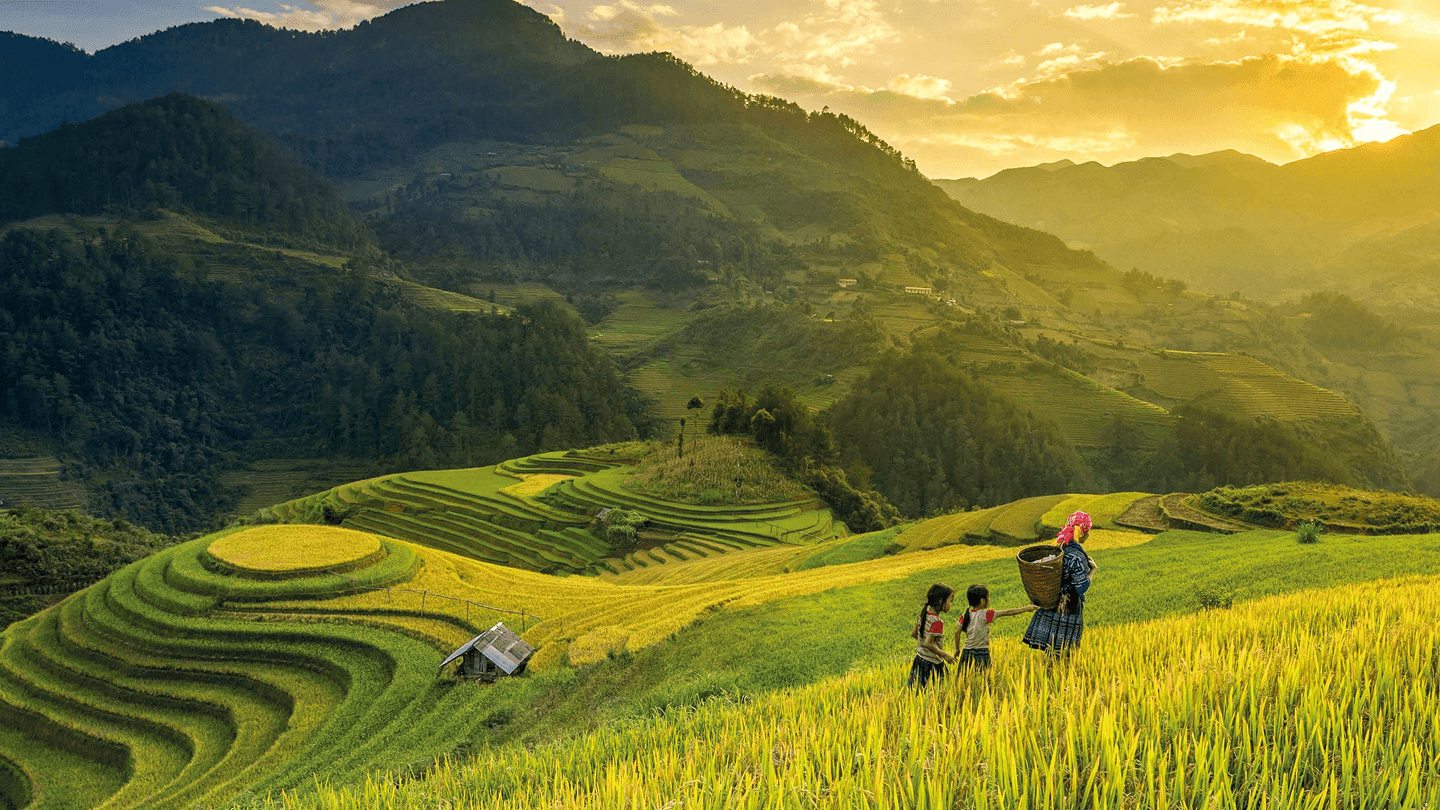Vientiane Travel Guide: What to See and Do in Laos’ Capital City
Vientiane is a blend of French colonial architecture, golden Buddhist temples, and riverside cafés, creating a unique charm that attracts travelers looking for a more laid-back experience.
Unlike the bustling capitals of its Southeast Asian neighbors, Vientiane, the capital of Laos, offers a relaxed and charming atmosphere. Situated on the banks of the Mekong River, Vientiane is a blend of French colonial architecture, golden Buddhist temples, and riverside cafés, creating a unique charm that attracts travelers looking for a more laid-back experience.
As the economic and political center of Laos, Vientiane is home to historical landmarks, cultural treasures, and a growing culinary scene. While it may not have the vibrancy of Bangkok or Hanoi, this capital city offers a tranquil escape with a touch of history, spirituality, and Laotian hospitality.
1, Climate and best time to visit
Vientiane has a tropical monsoon climate, with two main seasons:
- Dry Season (November - April): The best time to visit, with pleasant temperatures (18°C - 32°C), clear skies, and ideal conditions for sightseeing.
- Wet Season (May - October): More humid and rainy, but still a good time to visit for lush green landscapes and fewer crowds.
The most recommended months for travel are November to February, when the weather is at its most comfortable.
2, How to get to Vientiane?
- By Air: Wattay International Airport (VTE) has direct flights from Bangkok, Hanoi, Ho Chi Minh City, Kuala Lumpur, and Singapore.
- By Land: Vientiane is well-connected by bus from Thailand, Vietnam, and Cambodia. The Friendship Bridge links it to Nong Khai, Thailand, making it an easy overland entry point.
- From Other Parts of Laos: If you're traveling within Laos, you can take a domestic flight, bus, or even a slow boat from Luang Prabang to Vientiane.
3, Top attractions in Vientiane
3.1. Pha That Luang - The National Symbol of Laos
One of the most important Buddhist monuments in Laos, Pha That Luang is a stunning golden stupa that symbolizes Laotian sovereignty and Buddhism. Originally built in the 3rd century and later reconstructed, it is the most iconic landmark of Vientiane.
3.2. Patuxai - The Lao Arc de Triomphe
A war memorial dedicated to those who fought for Laos' independence, Patuxai resembles Paris' Arc de Triomphe but with traditional Laotian motifs. Climb to the top for a panoramic view of the city.
3.3. Wat Sisaket - The Oldest Temple in Vientiane
This temple is famous for its thousands of Buddha images, some of which date back to the 16th century. It is one of the few structures that survived the Siamese invasion of 1828, making it a significant historical site.
3.4. Buddha Park (Xieng Khuan) - A Surreal Sculpture Park
Located 25 km from Vientiane, Buddha Park is an unusual collection of over 200 Buddhist and Hindu statues, including a giant reclining Buddha and mythical creatures. It’s a fascinating place for photography and exploration.
3.5. COPE Visitor Center - Understanding Laos’ War History
A must-visit for those interested in history, the COPE Center provides insights into the impact of unexploded ordnance (UXO) left from the Vietnam War and how the organization helps rehabilitate victims.
3.6. That Dam - The Black Stupa
A lesser-known yet intriguing site, That Dam (Black Stupa) is an old structure believed to have been covered in gold before it was taken by the Siamese. It is said to be protected by a seven-headed Naga serpent.
4, Best things to do in Vientiane
4.1. Stroll along the Mekong Riverside
The Mekong River promenade is the perfect place to relax, especially at sunset. It’s lined with food stalls, cafés, and street performers, creating a lively but peaceful atmosphere.
4.2. Visit the Night Market
The Vientiane Night Market, located by the riverside, is a great place to shop for handmade textiles, handicrafts, souvenirs, and local snacks.
4.3. Try Laotian Cuisine
Vientiane has a fantastic food scene that blends Lao, Thai, and French influences. Some must-try dishes include:
- Larb (Laap): Minced meat salad with herbs and lime juice.
- Tam Mak Houng: Lao-style green papaya salad.
- Khao Poon: Spicy rice noodle soup.
- Baguettes and Pastries: A French colonial influence that remains popular in cafés.
4.4. Experience a Traditional Lao Sauna and Massage
For a relaxing experience, visit a herbal Lao sauna - a traditional steam bath infused with aromatic herbs. Many places offer affordable Lao massages, perfect after a day of sightseeing.
4.5. Take a Day Trip to the Buddha Park
A short drive from Vientiane, the Buddha Park (Xieng Khuan) is worth a half-day trip to see its strange yet fascinating Buddhist and Hindu sculptures.
4.6. Explore Local Markets
- Talat Sao (Morning Market): A mix of modern shopping and traditional market stalls.
- Khua Din Market: A true local market where you can see daily Lao life and shop for fresh produce.
5, Essential travel tips for Vientiane
- Currency: The local currency is Lao Kip (LAK), but USD and Thai Baht are also accepted in many places.
- Dress Modestly: Especially when visiting temples - shoulders and knees should be covered.
- Getting Around: Tuk-tuks are the most common way to travel around, but you can also rent a bicycle or motorbike.
- Stay Hydrated: The tropical heat can be intense, so drink plenty of water.
Vientiane may not have the excitement of Bangkok or the ancient charm of Luang Prabang, but its laid-back charm, rich history, and riverside beauty make it a destination worth visiting. Whether you’re admiring the golden stupas, exploring the lively night market, or sipping Lao coffee by the Mekong, Vientiane offers a unique glimpse into the heart of Laos.
For those seeking a mix of history, culture, and relaxation, Vientiane is the perfect gateway to discovering the beauty of Laos.




 English
English
 French
French
 Italian
Italian




